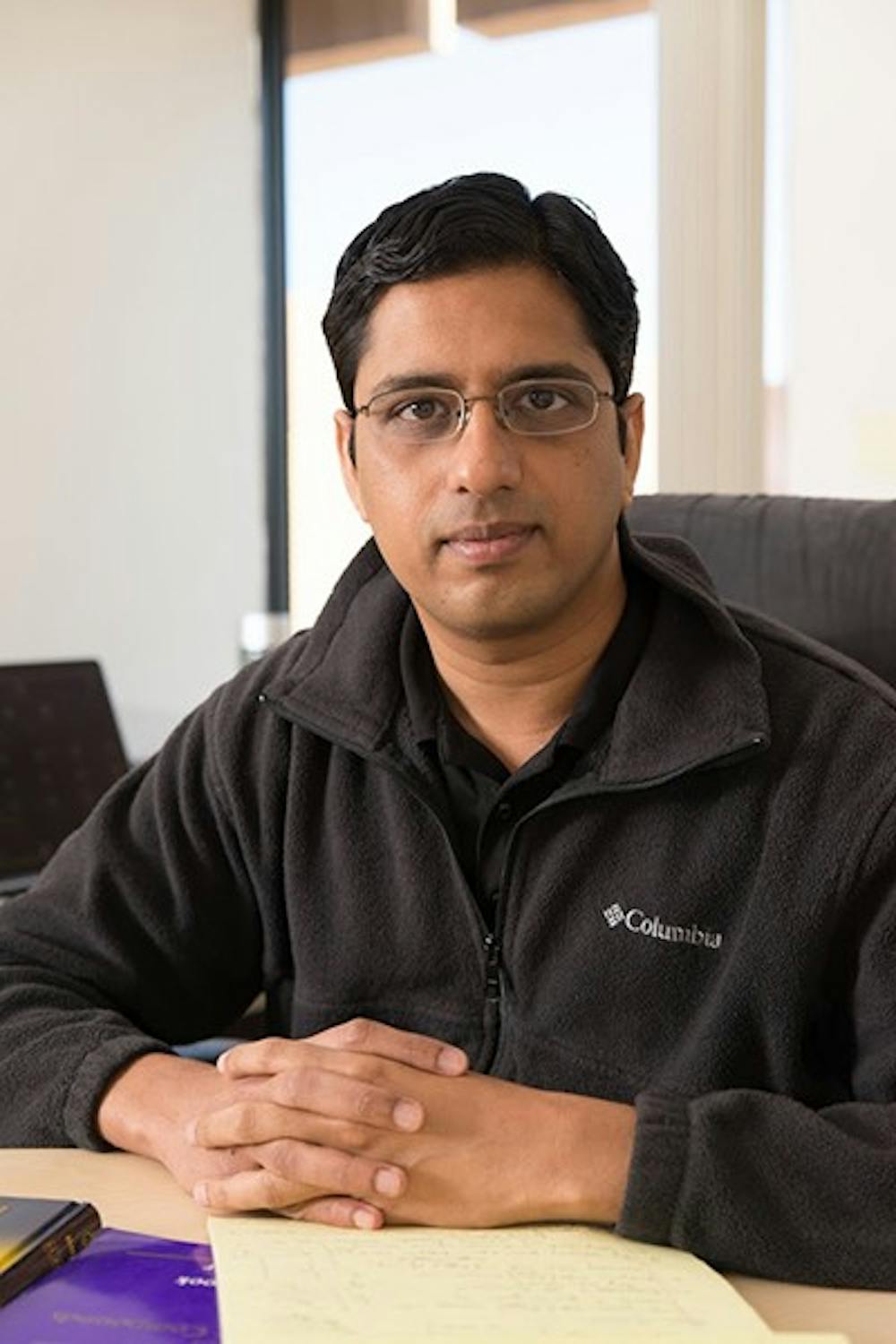 Assistant professor Jagannathan Rajagopalan poses at his office in the Engineering Research Center. Rajagopalan designed the structure for biohybrid swimmers. (Photo by Andrew Ybanez)
Assistant professor Jagannathan Rajagopalan poses at his office in the Engineering Research Center. Rajagopalan designed the structure for biohybrid swimmers. (Photo by Andrew Ybanez)
Recently referred to as “sperm-bots” or “bio-bots”, biohybrid swimmers are a recent breakthrough in the science of biomechanics. Biohybrid swimmers are small-scale functional devices that are modeled in the likeness of sperm.
The development was the result of research done by ASU professor Jagannathan Rajagopalan and a research unit at the University of Illinois.
“This is actually the first demonstration of actually powering a device using a cell at the small scale,” Rajagopalan said. “That is the novelty.”
Biohybrid swimmers are sperm-structured devices that were given rat and mice heart cells. The contraction of the cardiac cells on the devices enabled them to have movement.
Rajagopalan said he and the research group in Illinois were the first to demonstrate that structures could be powered by cells, and not an external force, on the nanoscale.
Rajagopalan got his doctorate at the University of Illinois, and in 2012 he joined the ASU community as an assistant professor. The research began in Illinois, and the majority of it took place there, he said.
The research development was funded by the National Science Foundation, Rajagopalan said.
According to the NSF official website, the foundation supports risky endeavors, concepts and a variety of projects.
Rajagopalan designed the process to create the biohybrid structures, and used PDMS, a kind of polymer, as a platform for them.
“(They're) powered by biology, so to speak,” Rajagopalan said.
The filament acts as a car and the cells as the engine that gives it power, he said. Rajagopalan said using cardiac cells was purposeful because the contraction of muscle cells was necessary in generating propulsion.
“I basically designed the device, the process to make the structure (and) I also initially showed that the cells can be put on the structure,” Rajagopalan said.
Rajagopalan said he shifted his attention away from the biological aspect and intends to analyze the structure’s limitations and its potential applications in other areas.
“Most of my contribution was in the design,” Rajagopalan said.
In theory, Rajagopalan said the new development could possibly lead to a self-sustained biohybrid swimmer, and it can be utilized to help cancer patients. He said it could potentially transmit medicines directly to cancer cells.
Rajagopalan said the theory has not been tested but may be a conceivable application with future developments.
He said his interest is the engineering aspect and that he and a student were applying the material used for the biohybrids toward a different project.
Rajagopalan and mechanical engineering graduate student Timothy Sowers said they are conceptualizing a small-scale measuring beam made out of the same material as the biohybrid.
Sowers said a potential application of the beam, if successful, would be useful in measuring the mass of cells during the cell cycle.
“The process of the cell cycle isn’t understood very well,” he said.
Data gathered from the measuring device could aid in further understanding the cell cycle, Sowers said.
Although separate from the biohybrid research, the application represents the numerous advancements that could be possible because of the new development.
Taher Saif is a researcher of biomechanics at the University of Illinois.
Saif said he led the research group in Illinois and was Rajagopalan's professor when he was a student there. He said Rajagopalan later became his post-doctoral researcher at the University of Illinois where the research and conceptualizing of the biohybrid swimmers initiated.
“Small scale swimmers are different from the others because they can swim by themselves,” he said. "This is the first time they can swim by themselves.”
Reach the reporter @kjonessc@asu.edu or @_KennedyScott




